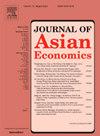企业多元化战略与破产风险:基于新冠肺炎疫情的再审视
IF 3.4
3区 经济学
Q1 ECONOMICS
引用次数: 0
摘要
目前的研究尚未就企业多元化战略与风险之间的关系达成共识,部分原因是难以解决多元化战略的潜在内生性问题,以及只有在外部强烈的不利冲击下,风险的表现才会更加明显。新冠肺炎疫情为重新审视企业多元化战略与风险之间的关系提供了独特的机会。我们发现,新冠疫情的爆发显著增加了采用多元化策略的企业的破产风险。进一步的检验表明,整体现金流波动性的增加,以及银行和贸易信贷减少导致的融资约束是这种影响背后的主要机制。然而,异质性检验表明,当企业为国有企业、与客户或供应商有关联、持有商业银行股份或保持较高的信息披露质量时,新冠肺炎对多元化战略企业破产风险的不利影响显著缓解。我们的研究结果有助于更深入地了解多元化战略在面临重大不利冲击时的潜在脆弱性。本文章由计算机程序翻译,如有差异,请以英文原文为准。
Corporate diversification strategies and bankruptcy risk: A re-examination based on COVID-19
Current research has not yet reached a consensus on the relationship between corporate diversification strategies and risk, in part because of the difficulty in addressing the potential endogeneity of diversification strategies and the fact that the manifestation of risk becomes more pronounced only under strong exogenous adverse shocks. The outbreak of COVID-19 provides a unique opportunity to re-examine the relationship between corporate diversification strategies and risk. We find that the outbreak of COVID-19 significantly increases the bankruptcy risk of firms employing diversification strategies. The further test reveals that the increased overall cash flow volatility, and financing constraints resulting from reduced bank and trade credit are the primary mechanisms behind this effect. However, heterogeneity tests indicate that the adverse impact of COVID-19 on the bankruptcy risk of diversified strategic firms is significantly mitigated when the firms are state-owned, have affiliations with customers or suppliers, hold shares in commercial banks, or maintain a high level of information disclosure quality. Our findings contribute to a deeper understanding of the potential vulnerability of diversification strategies when faced with significant adverse shocks.
求助全文
通过发布文献求助,成功后即可免费获取论文全文。
去求助
来源期刊

Journal of Asian Economics
ECONOMICS-
CiteScore
4.70
自引率
9.40%
发文量
90
期刊介绍:
The Journal of Asian Economics provides a forum for publication of increasingly growing research in Asian economic studies and a unique forum for continental Asian economic studies with focus on (i) special studies in adaptive innovation paradigms in Asian economic regimes, (ii) studies relative to unique dimensions of Asian economic development paradigm, as they are investigated by researchers, (iii) comparative studies of development paradigms in other developing continents, Latin America and Africa, (iv) the emerging new pattern of comparative advantages between Asian countries and the United States and North America.
 求助内容:
求助内容: 应助结果提醒方式:
应助结果提醒方式:


